Israel 2018 "Archeozoology in Eretz Israel"
| Issue Date | 28.08.2018 |
| ID | Michel: 2648-2649; Scott: 2195-2196; Stanley Gibbons: 2502-2503; Yvert et Tellier: 2557-2558; Category: pR |
| Design | Ronen Goldberg |
| Stamps in set | 2 |
| Value | IS 2.50 - Elephant, Holon, Acheulean Stone-work,
photo of elephant and elephant tusk IS 2.50 - Lioness, Jaffa, Late Bronze Age, photo of lioness and lioness skull |
| Emission/Type | commemorative |
| Issue places | Holon |
| Size (width x height) | 30mm x 40mm |
| Layout | Tow sheets of 15 stamps with 5 tabs on last row |
| Products | FDC x1 |
| Paper | Security mark: microtext |
| Perforation | 13,25 x 13 |
| Print Technique | Offset lithography |
| Printed by | Cartor Security Printing, France |
| Quantity | |
| Issuing Authority | Israel Post |
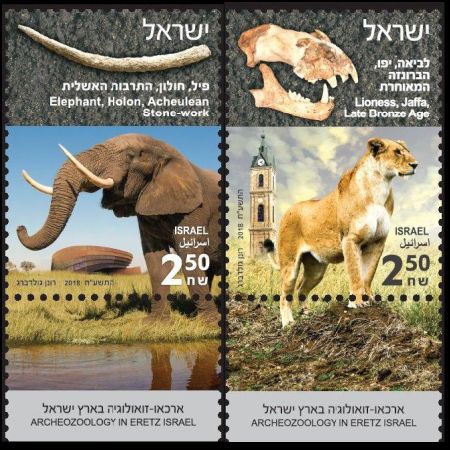
On August 28th, 2018, the Post of Israel issued the set of two stamps "Archeozoology in Eretz Israel"
The following text was written by Archeo-zoologist Dr. Moshe Sadeh for these stamps press release, in 2018.
The term archeozoology, the scientific field that studies animal bones found in archeological excavations, is composed of three Greek words. Archeo – ancient, Zoo – animals and Ology – field of study. In other words, the study of ancient animals.
A number of unique findings have been made in excavations in Eretz Israel, including: the bones of a Syrian bear in Tel Hadid dating from the Iron Age (Israelite) (930-586 BCE). The location and period are reminiscent of the biblical story of the prophet Elisha and the bears in Kings II; the bones of a hippopotamus found at Tel Qasile (Napoleon Hill) on the banks of the Yarkon River (10th century BCE) between Tel Aviv and Ramat Gan.
The remains of an ancient hippopotamus from the Pottery Neolithic Period (5500-4500 BCE) were also discovered in the Ramat Aviv area of Tel Aviv. The Israel Philatelic Service previously issued a stamp featuring a dinosaur whose fossilized footprints were discovered on the banks of the Tethys Sea, on a kibbutz near Jerusalem.
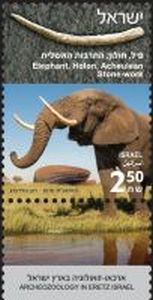 |
| Elephant, Holon, Acheulean Stone-work on stamp of Israel 2018 MiNr.: 2648, Scott: 2195. |
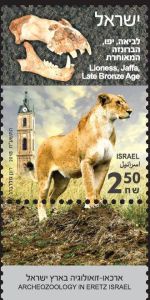 |
| Lioness, Jaffa, Late Bronze Age on stamp of Israel 2018 MiNr.: 2649, Scott: 2196, |
The median Acheulean period belongs geologically to the Pleistocene epoch. The excavations were carried out by Dr. Tamar Noy in 1960.
The elephant remains date from the late Lower Paleolithic period – the early Stone Age (1,000,000 – 120,000 years ago).
The site is located on the third eolianite ridge east of the sea. The elephant tusk relic is on display in the pre-historic exhibit at the Israel Museum, alongside elephant bones from the Daughters of Jacob Bridge.
Lioness, Jaffa, Late Bronze Age
The Late Bronze Age is also known as the Late Canaanite Age (1200-1500 BCE).
Archeologist Dr. Jacob Kaplan believed that the place where the lioness' remains were discovered was a pre-Philistine temple thought to be dedicated to the lion.
The remains were dated to the interim period when the sea people (including the Philistines) entered Eretz Israel from the south.
Until recently, the skull was kept on the top floor of the Jaffa Museum.
Products and associated philatelic items
| FDC | First-Day-of-Issue Postmarks | Mini Sheets |
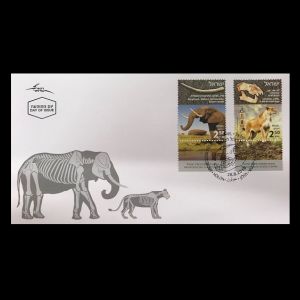 |
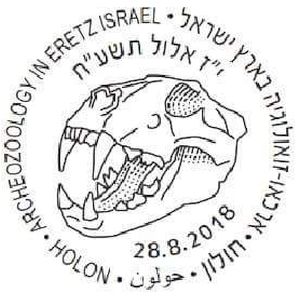 |
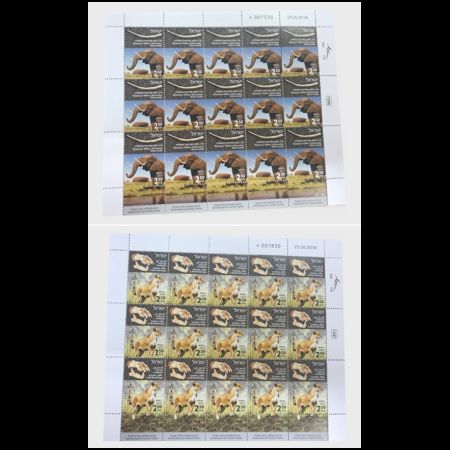 |
| Circulated FDC | ||
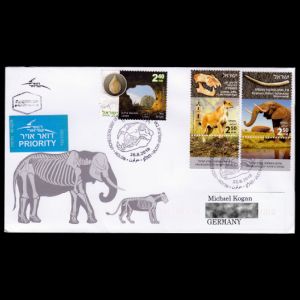 |
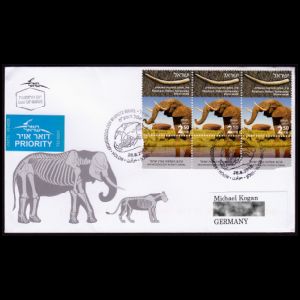 |
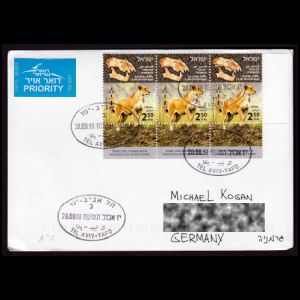 |
References:

|
- Technical details and official press release:
Israel Post, Israel philatelic Federation.
Acknowledgements:
- Many thanks to Dr. Peter Voice, PhD Department of Geological and Environmental Sciences, Western Michigan University, USA, for review of a draft of this article.